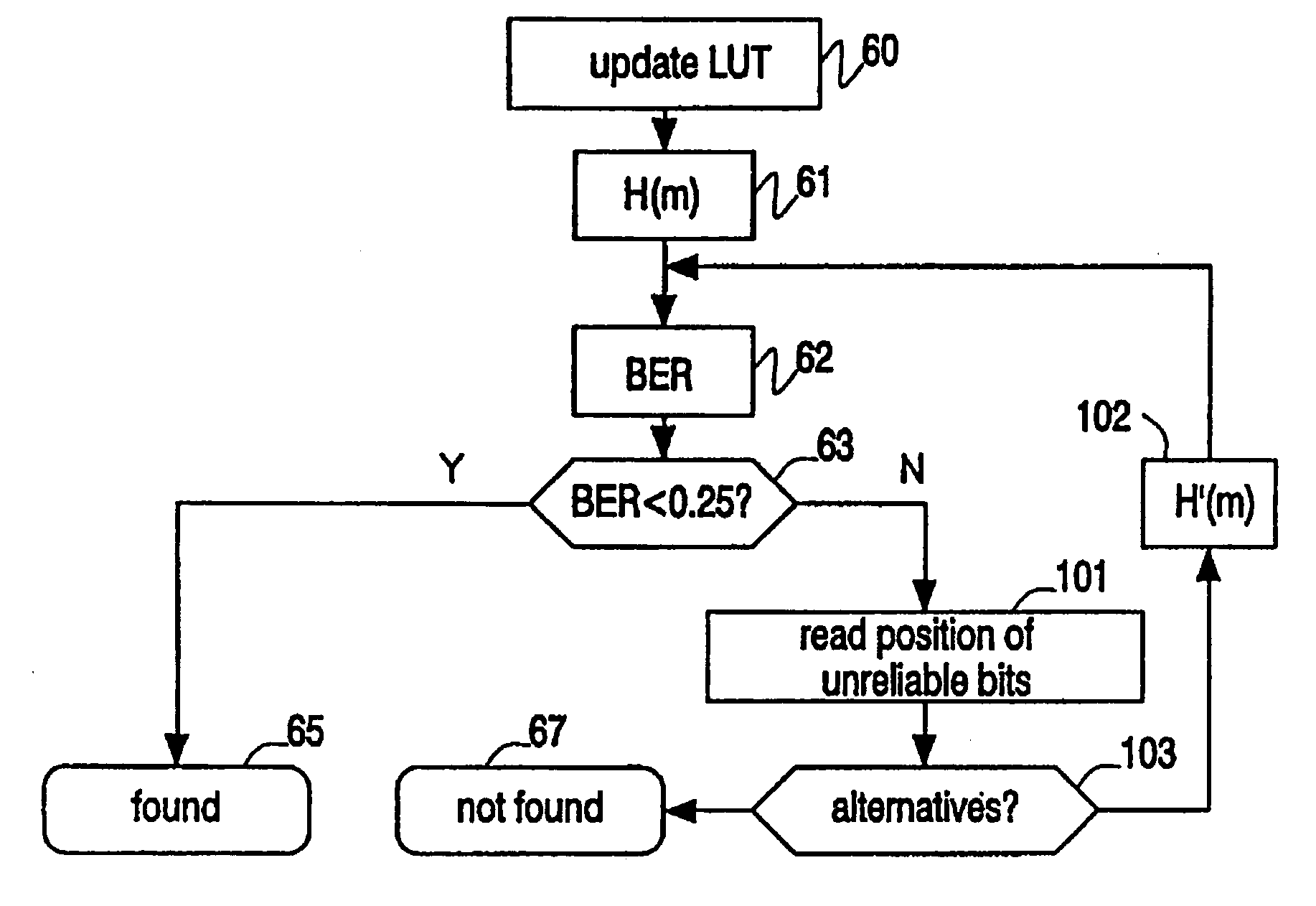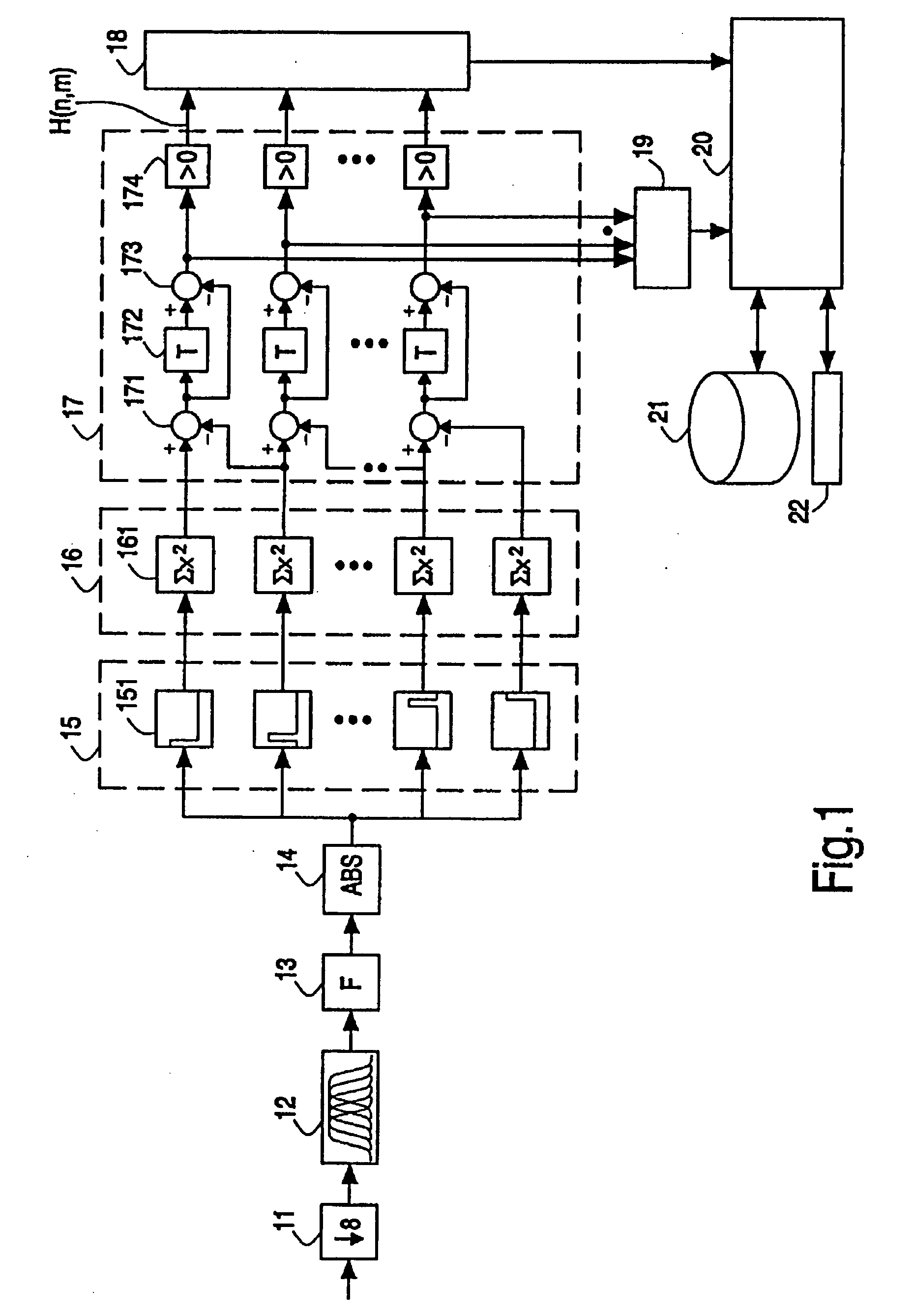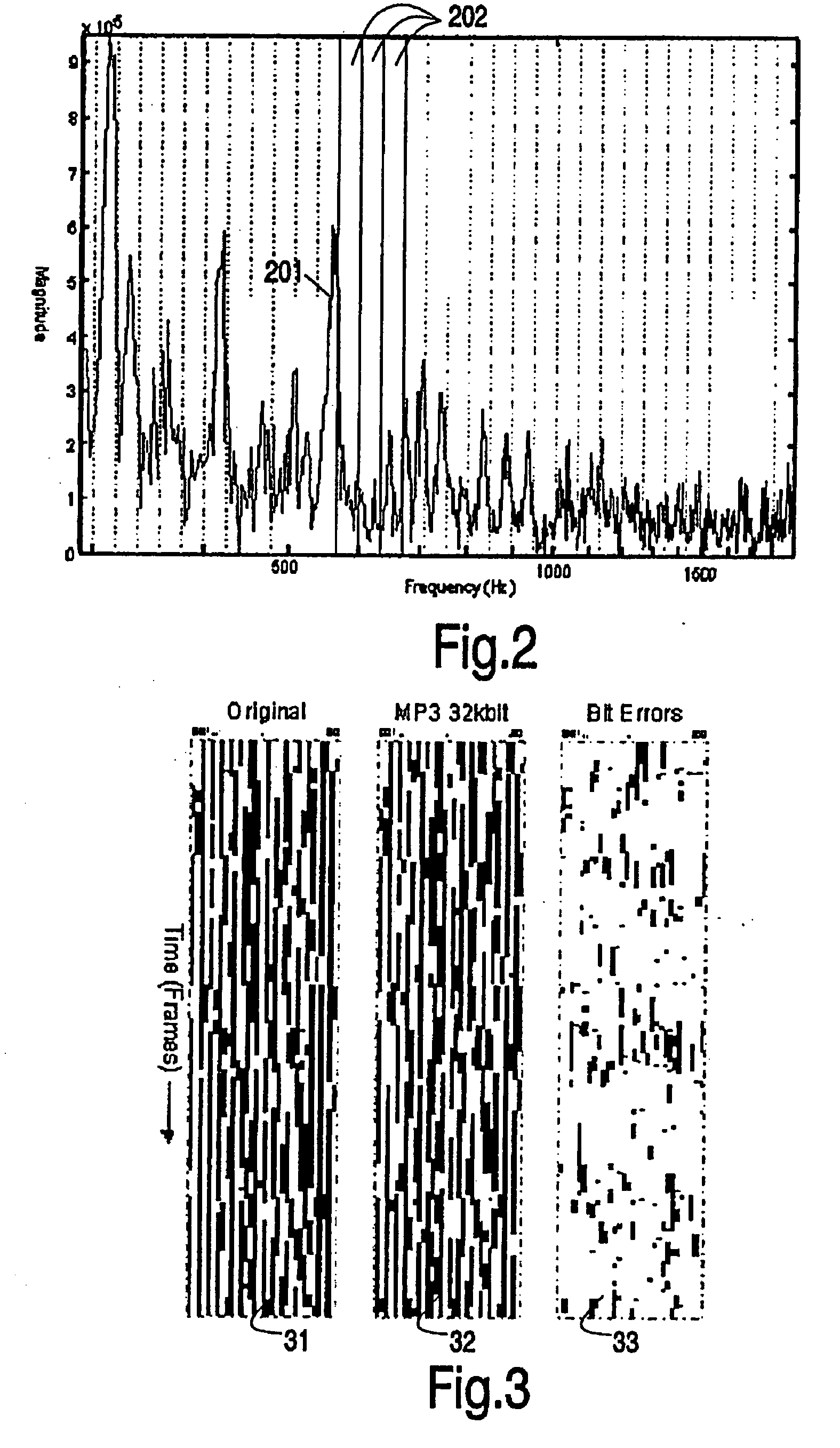Generating and matching hashes of multimedia content
a multimedia content and hashing technology, applied in the field of multimedia content generation and matching hashes, can solve the problems of prohibitive search strategy and exhaustive search, and achieve the effect of overcoming the complexity of np-complete search and robust hashing
- Summary
- Abstract
- Description
- Claims
- Application Information
AI Technical Summary
Benefits of technology
Problems solved by technology
Method used
Image
Examples
Embodiment Construction
[0021]Before describing a preferred embodiment, a general description of considerations underlying this invention will be elucidated.
[0022]Two signals (audio, video, image) can differ quite drastically (e.g. by compression) in a signal theoretical sense, whereas they are perceptually indistinguishable. Ideally, a hash function mimics the behavior of the human auditory system (HAS) or human visual system (HVS), i.e. it produces the same hash signal for content that is considered the same by the HAS / HVS. However, many kinds of processing (compression, noise addition, echo addition, D / A and A / D conversion, equalization etc.) can be applied to the signal and there is no algorithm that is able to mimic the HAS / HVS perfectly. A complicating factor is that even the HAS / HVS varies from person to person as well as in time, and even the notion of one single HAS / HVS is untenable. Also, the classical definition of a hash does not take time into account: a robust hash should not only be able to ...
PUM
 Login to View More
Login to View More Abstract
Description
Claims
Application Information
 Login to View More
Login to View More - R&D
- Intellectual Property
- Life Sciences
- Materials
- Tech Scout
- Unparalleled Data Quality
- Higher Quality Content
- 60% Fewer Hallucinations
Browse by: Latest US Patents, China's latest patents, Technical Efficacy Thesaurus, Application Domain, Technology Topic, Popular Technical Reports.
© 2025 PatSnap. All rights reserved.Legal|Privacy policy|Modern Slavery Act Transparency Statement|Sitemap|About US| Contact US: help@patsnap.com



